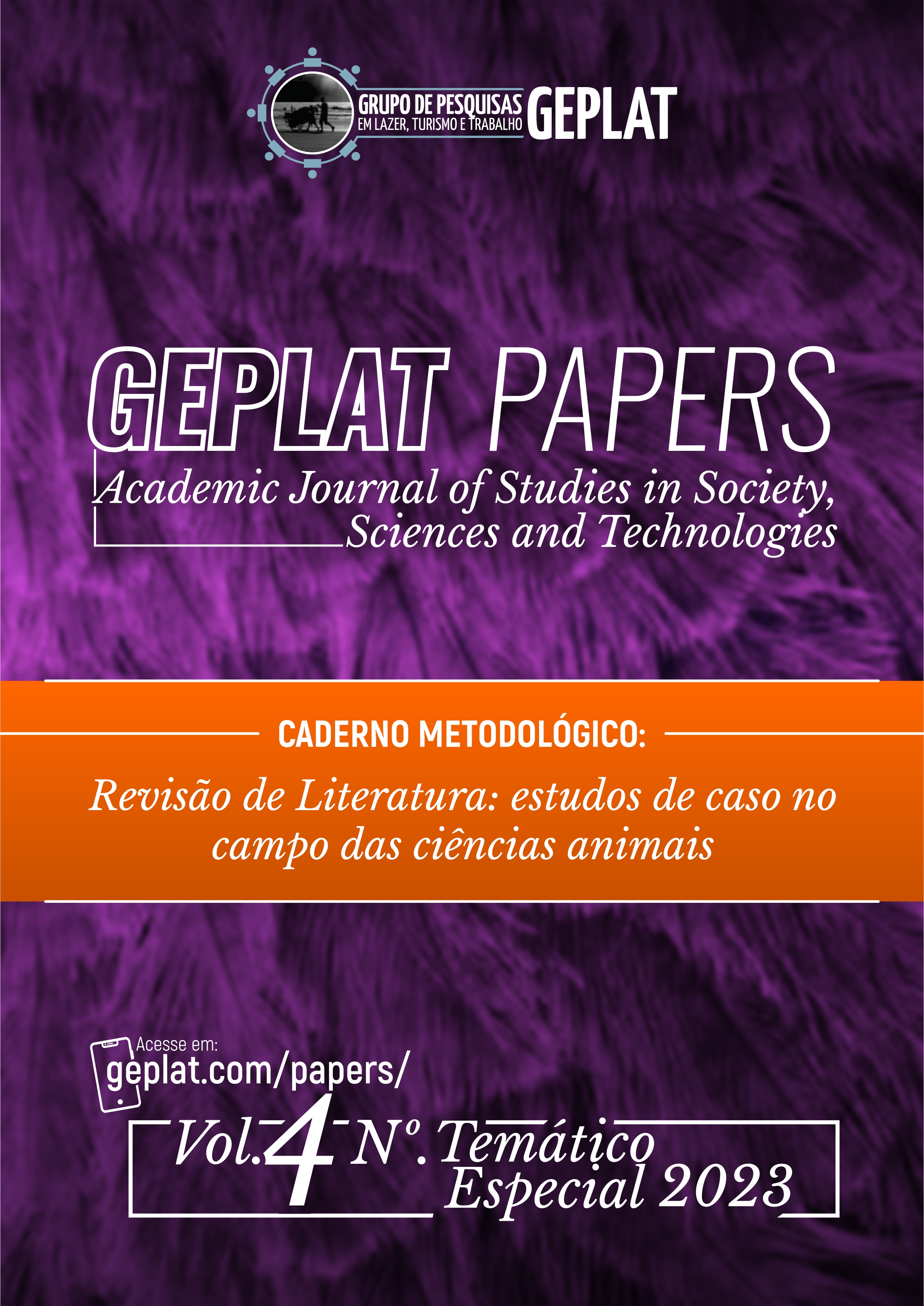EFEITOS RESPIRATÓRIOS DO USO DE ISOFLURANO EM EQUINOS SUBMETIDOS A ANESTESIA GERAL RESPIRATORY EFFECTS OF ISOFLURANE USE IN HORSES SUBMITTED TO GENERAL ANESTHESIA
Main Article Content
Abstract
RESUMO: Este trabalho objetivou produzir uma revisão de literatura sobre as alterações respiratórias em equinos submetidos à anestesia geral com uso do fármaco isoflurano, destacando as qualidades de uma anestesia inalatória com o uso de fármacos halogenados. Na literatura, os fármacos halogenados têm ação depressora respiratória, devido à diminuição do volume respirado, diminuindo a qualidade de troca gasosa. Essa má perfusão na musculatura em equinos pode fazer com que até 1% dos animais venham a óbito em até 7 dias após o procedimento. Ao descrever os aspectos anatômicos e fisiológicos do pulmão equino, é possível observar o simples mecanismo de hemóstase que é uma excelente via de administração de anestésicos. O isoflurano tem ótimas qualidades broncodilatadoras e pode ser usado em pacientes com problemas pulmonares. A biodisponibilidade e a baixa metabolização hepática e renal o tornam um excelente agente de manutenção da anestesia. Porém, seu odor irritante dificulta a indução, sendo necessário em alguns pacientes fazer indução com outros fármacos. Seus colaterais são dose dependente. Em animais com uma medicação pré-anestésica, em que se pode reduzir a disponibilidade do agente inalatório, dificilmente se obtém efeitos indesejáveis. A variação fisiológica de cada paciente é única. Dois pacientes igualmente hígidos podem ter uma profundidade totalmente diferente com um mesmo protocolo anestésico, sendo necessário observar e readequar a todo momento a disposição do fármaco durante a anestesia. Palavras-chave: Efeitos respiratórios, Cavalos, Isoflurano, Anestesia.
ABSTRACT: This study aimed to produce a literature review on respiratory changes in horses submitted to general anesthesia with the use of the drug isoflurane, highlighting the qualities of an inhalational anesthesia with the use of halogenated drugs. In the literature, halogenated drugs have respiratory depressant action, due to the decrease in the volume breathed, decreasing the quality of gas exchange. This poor perfusion in the muscles in horses can cause up to 1% of the animals to die within 7 days after the procedure. When describing the anatomical and physiological aspects of the equine lung, it is possible to observe the simple mechanism of hemostasis, which is an excellent route of administration of anesthetics. Isoflurane has great bronchodilator qualities and can be used in patients with lung problems. The bioavailability and low hepatic and renal metabolism make it an excellent maintenance agent of anesthesia. However, its irritating odor hinders induction, and it is necessary in some patients to do induction with other drugs. Its collateral is dose dependent. In animals with a pre-anesthetic medication, in which the availability of the inhalation agent can be reduced, undesirable effects are hardly obtained. The physiological variation of each patient is unique. Two equally healthy patients can have a totally different depth with the same anesthetic protocol, and it is necessary to observe and readjust at all times the disposition of the drug during anesthesia. Keywords: Respiratory effects, Horses, Isoflurane, Anesthesia.
Article Details

This work is licensed under a Creative Commons Attribution-NonCommercial 4.0 International License.
<a rel="license" href="http://creativecommons.org/licenses/by-nc/4.0/"><img alt="Licença Creative Commons" style="border-width:0" src="https://i.creativecommons.org/l/by-nc/4.0/88x31.png" /></a><br />Este obra está licenciado com uma Licença <a rel="license" href="http://creativecommons.org/licenses/by-nc/4.0/">Creative Commons Atribuição-NãoComercial 4.0 Internacional</a>.

